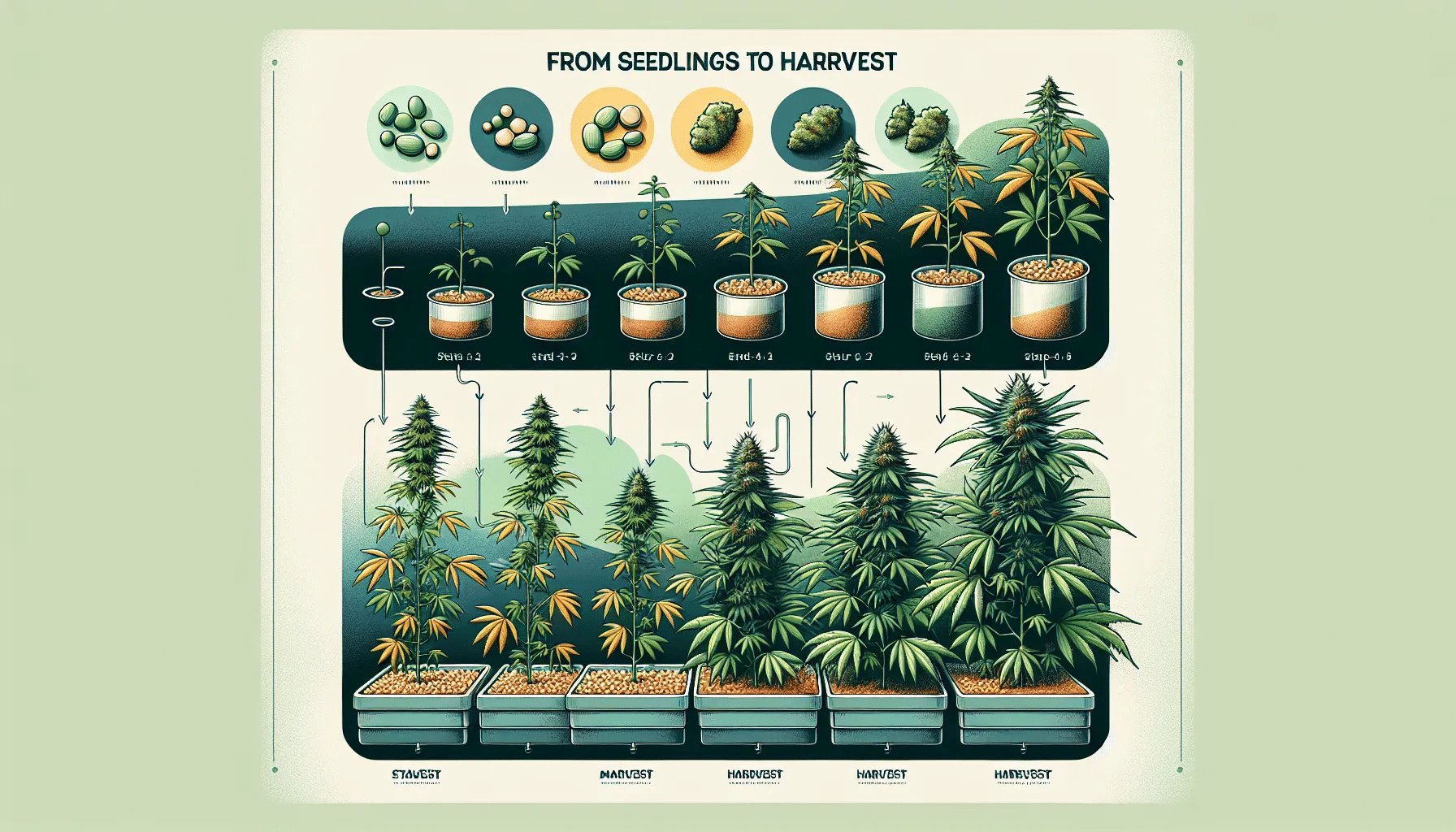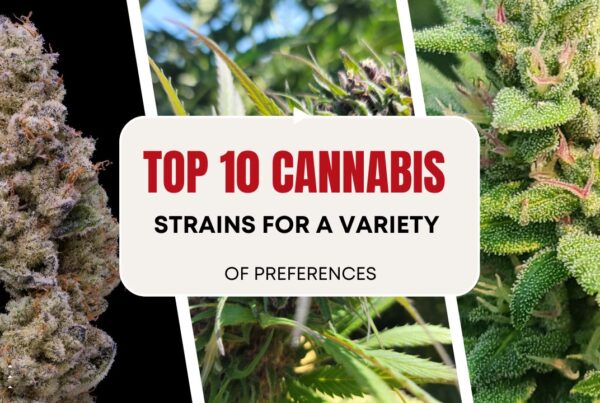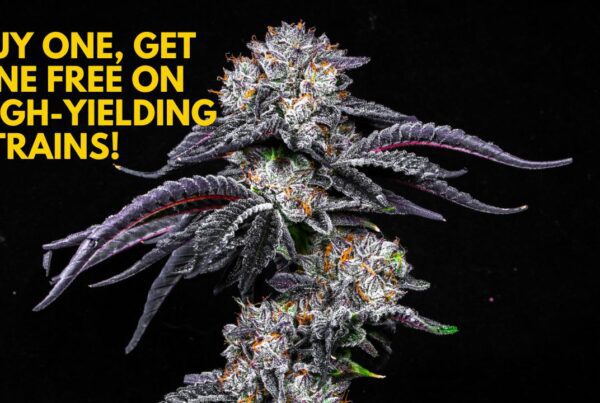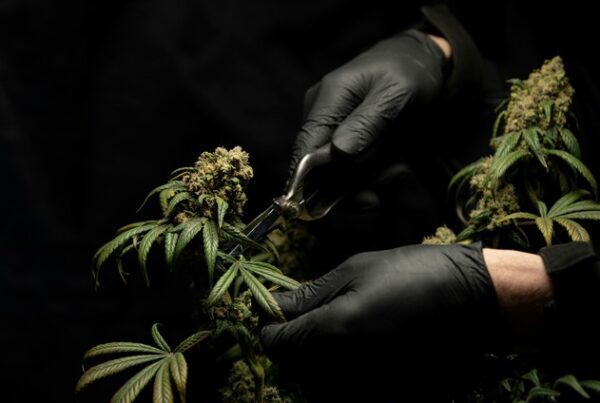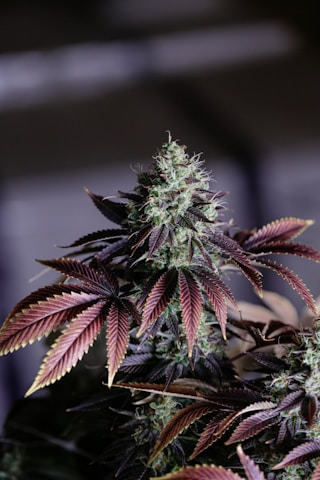 Cannabis cultivation has gained significant importance in recent years, with a growing interest in home cultivation. Whether you are a beginner or an experienced grower, having a comprehensive guide is crucial for successful cannabis cultivation. In this blog post, we aim to provide you with a detailed and informative guide that covers every stage of the cultivation process.
Cannabis cultivation has gained significant importance in recent years, with a growing interest in home cultivation. Whether you are a beginner or an experienced grower, having a comprehensive guide is crucial for successful cannabis cultivation. In this blog post, we aim to provide you with a detailed and informative guide that covers every stage of the cultivation process.
The Cultivation Process: From Seedlings to Harvest
From choosing the right seeds to understanding germination, seedling care, vegetative growth, flowering stage, and harvesting techniques, we will explore all the key factors for successful cultivation. To ensure the best possible outcome, we will discuss important aspects such as lighting, temperature, humidity, nutrient requirements, and watering techniques for each stage.
Common Challenges and Troubleshooting
Additionally, we will address common challenges that growers may encounter and provide tips and tricks for troubleshooting issues.
By the end of this guide, you will have a solid understanding of the entire cannabis cultivation process and be equipped with the knowledge to grow healthy and high-quality plants. Whether you are a hobbyist or considering cannabis cultivation for commercial purposes, join us on this journey and unlock the secrets to successful cannabis cultivation.
The Importance of Choosing High-Quality Cannabis Seeds
When it comes to growing cannabis, choosing the right seeds is crucial for successful cultivation. High-quality seeds can make all the difference in the outcome of your plants. That’s why it’s important to source your seeds from a reputable supplier like Original Johnny Seed Bank.
At Original Johnny Seed Bank, they offer a wide variety of cannabis seeds to suit every grower’s needs. Whether you’re looking for CBD-rich hybrid seeds, indica seeds, or sativa seeds, they have you covered. Each seed is carefully selected and tested to ensure its quality and viability.
Compliance with the 2018 Farm Bill
One of the standout features of the seeds from Original Johnny Seed Bank is their compliance with the 2018 Farm Bill. This legislation mandates that cannabis seeds contain less than 0.2% THC, the psychoactive compound found in cannabis. This means that you can grow your plants without worrying about legal issues or unwanted psychoactive effects.
An Extensive Selection of Strains
Not only does Original Johnny Seed Bank provide high-quality, compliant seeds, but they also offer an extensive selection of strains. From classic favorites to unique and exotic varieties, you’ll find something to suit your taste and preferences. Whether you’re a seasoned grower or just starting out, they have the perfect seeds for you.
Start Your Cannabis Cultivation Journey with Original Johnny Seed Bank
When it comes to cannabis cultivation, the importance of selecting the right seeds cannot be overstated. It sets the foundation for a successful and rewarding growing experience. By choosing high-quality seeds from Original Johnny Seed Bank, you can ensure that your plants have the best start possible.
The Importance of Germination in Cannabis Cultivation
Germination is a crucial step in growing cannabis as it sets the foundation for successful growth. Understanding the process of germinating cannabis seeds and employing the right methods is essential to ensure healthy plants and a bountiful harvest. Let’s dive deeper into this important stage and explore some key factors for successful germination.
Selecting High-Quality Seeds
The process of germination begins with selecting high-quality cannabis seeds. Look for seeds that are:
- Dark in color
- Firm to the touch
- Have a smooth surface
Once you have your seeds, you can choose from different methods of germination.
Methods of Germination
Two popular methods of germination are:
- Paper Towel Method: Place the seeds between two damp paper towels and keep them in a warm and dark place. This method allows for easy monitoring of the seeds’ progress and ensures they receive the right amount of moisture.
- Direct Planting: Sow the seeds directly into the growing medium. This method is less hands-on and eliminates the risk of damaging the delicate roots during transfer. However, it may be harder to monitor the progress of the seeds compared to the paper towel method.
Key Factors for Successful Germination
Temperature, humidity, and proper moisture levels are crucial factors for successful germination. Consider the following:
- Temperature: Cannabis seeds thrive in temperatures between 70-85°F (21-29°C). Maintain a consistent temperature throughout the germination process to avoid stunting the growth of the seeds.
- Humidity: Humidity levels should be around 70% to provide an optimal environment for germination.
- Moisture Levels: Ensure that the growing medium is damp but not soaking wet. Overwatering can lead to the seeds rotting before they have a chance to sprout.
Tips and Recommendations
To further enhance your germination success, consider the following tips and recommendations:
- Soak the seeds in water for 24 hours before germination to help soften the seed coat and encourage faster sprouting.
- Use a heat mat or propagator to maintain a consistent temperature, especially in colder climates.
- Use distilled or filtered water to avoid any potential contaminants that may hinder germination.
Germination is a crucial step in the cannabis cultivation process. By understanding the process, employing the right germination methods, and paying attention to key factors such as temperature, humidity, and moisture levels, you can ensure successful germination and set the stage for healthy plant growth. Incorporating tips and recommendations from trusted sources can further enhance your germination success. So get those seeds ready, and let the magic of germination begin!
The Importance of the Seedling Stage in Cannabis Growth
The seedling stage of cannabis growth is a critical periodwhere providing the right conditions is essential for healthy plant development. By understanding and addressing key factors such as lighting, temperature, humidity, nutrient requirements, and watering, growers can ensure that their seedlings have the best chance of thriving.
Key Factors for Successful Seedling Growth
- Lighting: Lighting plays a crucial role in seedling growth as it provides the energy needed for photosynthesis. During this stage, it is recommended to use fluorescent lights or LED grow lights to provide a balanced spectrum of light. Position the lights about 2-4 inches above the seedlings to prevent stretching and promote compact growth. Provide 18-24 hours of light per day to mimic the long summer days that cannabis plants prefer.
- Temperature and Humidity: Temperature and humidity are also crucial factors to consider. The ideal temperature range for seedlings is between 70-80 degrees Fahrenheit during the day and slightly cooler at night. Maintaining proper humidity levels between 50-70% helps prevent the seedlings from drying out. Use a humidifier or place a tray of water near the seedlings to maintain adequate humidity.
- Nutrient Requirements: Nutrient requirements for seedlings are relatively low compared to other stages of growth. Use a well-balanced, gentle fertilizer specifically formulated for seedlings. Start with a quarter-strength solution and gradually increase the strength as the seedlings grow. Be cautious not to overfeed, as it can lead to nutrient burn and stunted growth.
- Watering: Watering seedlings requires a delicate balance. Overwatering can lead to root rot, while underwatering can cause dehydration. Water the seedlings when the top inch of soil feels dry. Use a spray bottle or a gentle stream of water to moisten the soil without saturating it. Ensure proper drainage to prevent waterlogged soil.
Maintaining optimal conditions during the seedling stage can be challenging but rewarding. By providing the right lighting, temperature, humidity, nutrient requirements, and watering, growers can ensure healthy seedling growth. Additionally, incorporating specific tips and recommendations from trusted sources, such as the top SERP results, can enhance the success of your cannabis cultivation journey. With careful attention to detail and a nurturing approach, you’ll be well on your way to growing strong and vibrant cannabis plants.
The Vegetative Stage of Cannabis Growth
The vegetative stage of cannabis growth is a crucial period that sets the foundation for healthy plants and a bountiful harvest. During this stage, the plants transition from the seedling stage and focus on developing strong roots, stems, and leaves. Understanding the key factors for successful growth during the vegetative stage is essential for cannabis cultivators.
Proper Lighting Requirements
One important aspect to consider during the vegetative stage is proper lighting requirements. Cannabis plants require a good amount of light to thrive and grow vigorously. Providing them with the right amount and intensity of light is crucial for their overall health and development. High-intensity discharge (HID) lights, such as metal halide (MH) and high-pressure sodium (HPS) lamps, are commonly used during this stage to provide the necessary light spectrum for optimal growth. LED lights are also becoming popular due to their energy efficiency and customizable spectrum. It’s important to monitor the distance between the lights and the plants to avoid light burn or stretching.
Nutrient Ratios
In addition to lighting, nutrient ratios play a vital role in the vegetative stage. Cannabis plants have specific nutrient requirements during this phase, and maintaining the proper balance is crucial for healthy growth. Nitrogen (N), phosphorus (P), and potassium (K) are the primary macronutrients that cannabis plants need in larger quantities. Nitrogen helps promote leaf and stem growth, phosphorus supports root development, and potassium aids in overall plant health and resistance to diseases. It’s important to provide a balanced nutrient solution and monitor the pH levels to ensure optimal nutrient uptake by the plants.
Pruning and Training Techniques
Pruning and training techniques are also essential during the vegetative stage to promote healthy growth and maximize yield. Pruning involves removing unwanted leaves and branches to improve airflow and light penetration to the lower parts of the plant. This helps prevent the development of mold and mildew and encourages more even growth. Training techniques, such as low-stress training (LST) and high-stress training (HST), can be used to manipulate the shape and structure of the plants, allowing for better light distribution and increased bud production.
Additional Resources
To gain further insights and tips for successful cultivation during the vegetative stage, it’s beneficial to explore additional resources from the top search engine results. These sources can provide valuable information on specific techniques, troubleshooting common issues, and best practices for achieving optimal results. By incorporating these insights into your cultivation practices, you can enhance your understanding and skills in growing healthy and productive cannabis plants during the vegetative stage.
The transition from the seedling stage to the vegetative stage is a critical time for cannabis plants. By understanding and implementing proper lighting requirements, maintaining balanced nutrient ratios, and utilizing effective pruning and training techniques, cultivators can promote healthy growth and maximize yield. Incorporating insights from reputable sources can further enhance cultivation practices and contribute to successful cannabis cultivation during the vegetative stage.
The Flowering Stage: A Critical Phase in Cannabis Cultivation
The flowering stage is a critical phase in cannabis cultivation that marks the transition from vegetative growth to the production of buds. This stage is significant because it determines the quality and quantity of the final harvest.
During the flowering stage, cannabis plants undergo hormonal changes that trigger the development of buds. These changes are primarily influenced by light cycles and hormones.
Light Cycles and the Flowering Stage
Light cycles play a crucial role in initiating the flowering stage. Cannabis plants require a specific balance of light and darkness to transition from the vegetative stage to flowering. Typically, a 12-hour light cycle followed by 12 hours of darkness is used to stimulate flowering. This mimics the natural light conditions that occur in the late summer and early fall when cannabis plants naturally start to flower. By manipulating the light cycle, growers can control when their plants enter the flowering stage.
Hormones and the Flowering Stage
Hormones also play a key role in triggering the flowering stage. The two main hormones involved are auxins and gibberellins. Auxins promote vegetative growth, while gibberellins promote flowering. As the balance between these hormones shifts during the flowering stage, the plant’s energy is redirected from vegetative growth towards the production of flowers. This hormonal shift is essential for the development of buds and ultimately, the production of cannabinoids and terpenes.
Supporting Bud Development
Supporting bud development is crucial during the flowering stage. Providing the right nutrients and managing nutrient requirements is essential for healthy bud growth. Cannabis plants have specific nutrient needs during the flowering stage, including an increased demand for phosphorus and potassium. It’s important to monitor nutrient levels and adjust fertilizer formulations accordingly to ensure optimal bud development.
Challenges During the Flowering Stage
However, challenges can arise during the flowering stage, such as nutrient deficiencies, pests, diseases, and environmental stressors. Nutrient deficiencies can manifest as yellowing leaves or stunted growth, while pests and diseases can damage buds and reduce yield. Environmental stressors, such as high temperatures or humidity, can also impact bud development. It’s important for growers to be vigilant and address these challenges promptly to ensure a successful harvest.
By understanding the significance of the flowering stage and the factors that trigger it, growers can effectively support bud development, manage nutrient requirements, and address common challenges. With proper care and attention during this critical phase, cannabis cultivators can maximize the quality and yield of their harvest.
Sources
Harvesting Cannabis: A Guide to Achieving Optimal Potency and Flavor
Harvesting is an essential step in cannabis cultivation that can greatly impact the potency and flavor of the final product. Knowing when to harvest your cannabis plants is crucial for achieving optimal results.
One of the key indicators of ripeness is the color of the trichomes, the tiny resin glands that cover the buds. As the plants near maturity, the trichomes change from clear to cloudy, indicating an increase in THC levels. Some growers may also look for amber trichomes, which indicate a higher level of CBD. Additionally, the pistils, the hair-like structures on the buds, can change color from white to orange or brown as the plant matures.
Harvesting Techniques
There are various harvesting techniques that you can employ depending on your preferences and the specific strain you are growing. Here are two common methods:
- Whole Plant Harvesting: Cut down the entire plant and hang it upside down to dry. This allows for a slower drying process, resulting in a smoother smoke and better flavor.
- Selective Harvesting: Harvest the buds individually as they reach their peak ripeness. This method allows for a more staggered harvest and can be beneficial for growers with limited drying space.
Drying and Curing
After harvesting, it is important to properly dry and cure the buds to preserve their quality. Here are the steps:
- Drying: Hang the buds in a cool, dark, and well-ventilated area for about a week. This allows the moisture to slowly evaporate, preventing mold and mildew growth.
- Curing: Store the dried buds in airtight containers, such as glass jars, for several weeks. This process helps enhance the flavor, aroma, and smoothness of the buds.
Tips for a Successful Harvest
- Handle with Care: Trichomes contain the majority of the cannabinoids and terpenes, which contribute to the effects and aroma of the cannabis. Avoid damaging the trichomes when handling the buds.
- Clean and Sanitize: Properly clean and sanitize your harvesting tools to prevent the spread of contaminants.
Troubleshooting Common Issues
During the harvesting process, it’s important to be aware of common issues that can arise and how to troubleshoot them. Nutrient deficiencies, pests, diseases, and environmental stressors can all impact the quality and yield of your harvest. Regularly inspect your plants and address any issues promptly to ensure a successful harvest.
Tips and Tricks for Successful Cannabis Cultivation
When it comes to cultivating cannabis, there are always tips and tricks that can help improve your success rate. Whether you’re a beginner or an experienced grower, it’s important to constantly learn and adapt your techniques. In this section, we’ll share some additional tips and tricks for successful cannabis cultivation .
Optimizing Growing Conditions
One crucial aspect of successful cultivation is optimizing growing conditions, including temperature, humidity, and air circulation. Cannabis plants thrive in specific temperature and humidity ranges, so it’s important to monitor and maintain these levels. The ideal temperature for cannabis cultivation is around 70-85°F (21-29°C), while the humidity should be kept between 40-60%. Proper air circulation is also essential to prevent the buildup of moisture and mold. Using fans or ventilation systems can help ensure a constant flow of fresh air throughout your growing space.
Incorporating Organic Fertilizers
Another key tip is to incorporate organic fertilizers into your cultivation practices. Organic fertilizers provide essential nutrients to your plants while promoting soil health and microbial activity. They are made from natural sources such as compost, bone meal, and fish emulsion. Organic fertilizers not only nourish your plants but also improve the overall quality of your harvest.
Additionally, maintaining proper hygiene in your growing area is crucial. Regularly clean your equipment, sterilize your tools, and remove any dead leaves or plant debris. This will help prevent the spread of pests and diseases, ensuring a healthy growing environment for your cannabis plants.
Valuable Insights from Reliable Sources
To further enhance your cultivation techniques, it’s always beneficial to incorporate unique tips and suggestions from reliable sources. One such source is the blog “From Seedlings to Harvest: A Comprehensive Guide to Cannabis Cultivation” by JG Seeds. This comprehensive guide covers various stages of cannabis cultivation, including germination, seedling stage, vegetative stage, flowering stage, and harvesting. It provides valuable insights into lighting requirements, nutrient ratios, pruning and training techniques, and addressing common challenges.
By incorporating these tips and suggestions into your cultivation practices, you can optimize your growing methods and increase your chances of a successful harvest.
In Conclusion
Successful cannabis cultivation requires attention to detail and continuous learning. Optimizing growing conditions, using organic fertilizers, and maintaining proper hygiene are essential elements for achieving healthy and high-quality cannabis plants. By incorporating unique tips and suggestions from reliable sources, you can further enhance your cultivation techniques and improve your overall success rate. So, keep exploring and experimenting with different methods to find what works best for you and your cannabis plants. Happy growing!
From Seedlings to Harvest: A Comprehensive Guide to Cannabis Cultivation
In this comprehensive guide to cannabis cultivation, we will cover all the key stages and important factors to consider for successful growing. Starting with choosing the right seeds, we will emphasize the availability of high-quality cannabis seeds from the Original Johnny Seed Bank. They offer a wide variety of strains including CBD-rich hybrids, indicas, and sativas. These seeds are compliant with the 2018 Farm Bill, containing less than 0.2% THC.
Throughout the guide, we will highlight the importance of following best practices and seeking guidance when needed. Each stage of cultivation, from germination to harvesting, requires attention to lighting, temperature, nutrients, and pruning techniques. We will provide information on different grow mediums such as soil-based cultivation, hydroponic systems, and outdoor growing to help individuals interested in growing cannabis make informed decisions.
As you embark on your own cannabis cultivation journey, remember to consult the Original Johnny Seed Bank website for more information and to explore their seed offerings. They offer a 10% discount coupon and free shipping on orders over $60 for 12 packs of seeds, making it convenient and affordable to get started. Whether you’re a beginner or an experienced grower, the Original Johnny Seed Bank is your trusted source for high-quality cannabis seeds.
Visit Original Johnny Seed Bank to start your cannabis cultivation journey today and unlock the potential of your green thumb!
Note: The statements made in this guide have not been evaluated by the FDA and the product is not intended to diagnose, treat, cure, or prevent any disease. Please follow product directions and consult with a physician before use.

